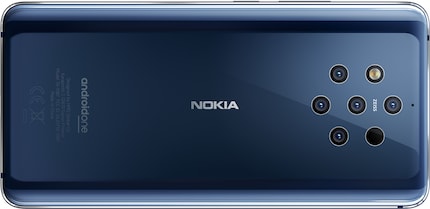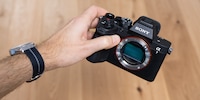
Guide
Smartphone optical zoom is about to land: here’s how it works
by David Lee

Sony, Xiaomi, Nokia... they've all been doing business with Light recently. But who is the camera company and what does it do?
Xiaomi develops cameras with Light. The camera technology behind the Nokia 9 PureView's five-camera setup comes from Light. Sony has entered into a partnership with Light to do camera things

Who is Light?
It's not often that a company comes more or less out of nowhere and then, within weeks, major manufacturers join forces with it. This is strange enough to take a look at the company.
Light hasn't been around for long. The company was founded in 2013 by Dave Grannan and Rajiv Laroia. The company's mission is extremely specific. Where Samsung, Sony and Apple want to endear themselves to end customers, Light has never had you or me in mind. This is because Light has specialised in cameras in smartphones right from the start.
Light doesn't just want to make camera lenses and camera modules for smartphones, but has set itself ambitious goals. Of course, more megapixels are always welcome, as they make for great marketing, but Light wants to pack "real optical zoom" into smartphones. This is precisely the functionality that caused a stir a few days ago in a prototype from Chinese manufacturer Oppo. Oppo doesn't seem to be quite there yet, but an initial functional design is available. So Light still has a chance to be the first.
Funnily enough, Light has not made a name for itself as the big revolutionaries in the smartphone sector. That doesn't seem to have happened until spring 2019. However, Light first made itself heard in 2016. In the three years since founding their company, Grannan and Laroia have worked on smaller camera modules and tried to combine high-quality but comparatively inexpensive camera lenses.
The result is the Light L16. The camera has 16 lenses built in, each with a different function, and looks like a lens fan run amok in hardware form. Behind the lenses are 16 image sensors.
The images are cobbled together into a 52-megapixel image using software. The L16 should sound familiar from here: The software is an Android distribution. The hardware: A Snapdragon 820 system-on-a-chip. Essentially, the L16 is a smartphone without the phone.
Now, however, Light has the attention of smartphone manufacturers. Optical zoom is a challenge that has been around for a long time. Until now, more versatile camera setups on smartphones could only be achieved to a limited extent or with clever software wizardry. If someone like Light now comes along and does this properly, well and on a large scale, Light could become the "Qualcomm of cameras", i.e. a company that sets the tone in an industry.
It remains exciting.
Journalist. Author. Hacker. A storyteller searching for boundaries, secrets and taboos – putting the world to paper. Not because I can but because I can’t not.
Interesting facts about products, behind-the-scenes looks at manufacturers and deep-dives on interesting people.
Show all
Background information
by Samuel Buchmann

Background information
by Dominik Bärlocher

Background information
by Dominik Bärlocher